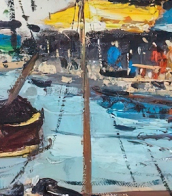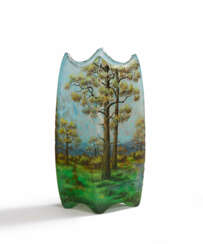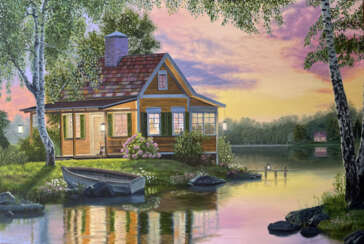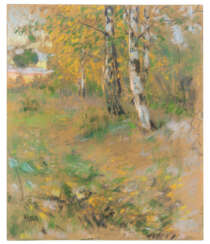birch trees

Christian Adam Landenberger was a German Impressionist painter and a professor at the State Academy of Fine Arts Stuttgart. He is especially known for his landscapes.
At first, he created realistic canvases using a dark palette. After 1890, he used brighter colors with lighting effects and broad brushstrokes. He is considered to have been one of the pioneers of German plein-air painting. After 1919, he began to produce etchings of a religious nature.


Pyotr Konchalovsky (Russian: Пётр Петрович Кончаловский) was a renowned Russian painter, a prominent member of the Jack of Diamonds group, which sought to blend modern French and German art with Russian primitivism. Born into an artistic family, Konchalovsky's career spanned several decades, during which he became known for his extensive use of color and innovative approach to composition. Influenced by Paul Cézanne, his works demonstrate a complex evolution of styles, from impressionism to socialist realism, without fully embracing abstraction. Konchalovsky's repertoire includes over five thousand works, comprising still lifes, landscapes, and portraits that contributed significantly to the development of Soviet realistic art. Notably, his artistry extended beyond his canvas; his family legacy includes notable figures in the arts, contributing to his lasting impact on both Russian and global art scenes.
His significant contribution to the avant-garde movement and his distinctive style, blending Fauvism and Cubism with realism, positioned him as a key figure in pre-Soviet and Soviet art. Despite challenges, including initial rejection in his homeland and a complex relationship with the Soviet regime, Konchalovsky's work received acclaim, including exhibitions at the prestigious Tretyakov Gallery. His legacy is preserved through the Petr Konchalovsky Foundation, ensuring his vibrant and dynamic works continue to inspire.
For collectors and experts in art and antiques, Konchalovsky's work offers a unique window into the evolution of Russian art during a turbulent century. His ability to synthesize various artistic influences while maintaining a distinctive voice makes his work a valuable addition to any collection.
To stay updated on sales and auction events related to Pyotr Konchalovsky's art, sign up for our newsletter. This subscription ensures you're informed about new opportunities to acquire pieces by this remarkable artist.
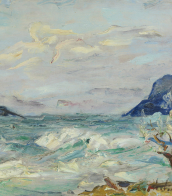

Gustav Kampmann was a German landscape painter and graphic artist. His work includes landscape paintings and lithographs, rarely with persons, sometimes with architectural elements. Kampmann has developed a personal, highly idiosyncratic style that impresses us with its openness, merely addressing motives, and spontaneous gesture. His works have a painterly freedom and a degree of abstraction that was not typical for that time.


Eugen Gustav Dücker was a Baltic German painter, in the Romantic style, associated with the Düsseldorfer Malerschule.
Despite his career's roots in Germany, he spent much of his time in Estonia, where he painted idyllic landscapes of the sea and the countryside. He also made numerous trips to Holland, Belgium, France and Italy.
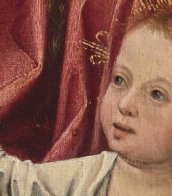

Vladimir Evgrafovich Tatlin (Russian: Владимир Евграфович Татлин) was a pioneering Russian and Soviet avant-garde artist, architect, and designer, celebrated for his innovative contributions to modern art, sculpture, and architecture. Born in Moscow, Tatlin's work transcended traditional boundaries, blending art with technology and ideology in a way that was revolutionary for his time. His dedication to merging functional design with artistic vision marked him as a key figure in the Constructivist movement, which sought to apply art to practical and social purposes.
Tatlin is best known for his ambitious but never-realized project, the Monument to the Third International, commonly referred to as Tatlin's Tower. This monumental structure, intended to serve as the headquarters for the Comintern in Petrograd, symbolized the utopian aspirations of the Soviet Union in the early 1920s. The tower's design, featuring a spiraling iron frame reaching 400 meters in height, embodied the avant-garde's commitment to innovation and the belief in art's power to shape a new societal order. Though it remained unbuilt, the tower's visionary design continues to influence architects and artists worldwide.
Beyond Tatlin's Tower, his contributions to the world of art include significant works in painting and sculpture. His approach to material and form, particularly his counter-reliefs, challenged traditional artistic conventions and opened new avenues for exploration in modern art. Tatlin's legacy extends to educational realms as well, where his tenure at the Moscow Vkhutemas (the Higher Art and Technical Studios) helped shape a generation of artists and designers. His works are preserved in major museums and galleries around the globe, serving as a testament to his enduring influence on culture and art.
For collectors and experts in art and antiques, Vladimir Tatlin's oeuvre represents a pivotal moment in the evolution of modernist expression. His innovative spirit and radical designs continue to inspire and provoke. If you wish to stay informed about new discoveries, sales, and auction events related to Vladimir Evgrafovich Tatlin, we invite you to sign up for our updates. This subscription is an excellent opportunity for enthusiasts and collectors to stay ahead in the dynamic world of art and antiques.






Hanna Dąbkowska-Skriabin is a Polish artist.
She graduated from the Academy of Fine Arts in Warsaw in the Department of Painting.
Hanna was very concerned about the fate of the human race, which is ruining itself with greed and short-sightedness. This is reflected in the works of the artist: many of her paintings are a timeless vision of a harsh world dominated by suffering and injustice. As if to protest against all this evil, Hanna Dąbkowska-Skriabin painted both paintings about love and beautiful landscapes. She is best known for her oil paintings. She has also mastered the techniques of ceramics and tapestry.


















